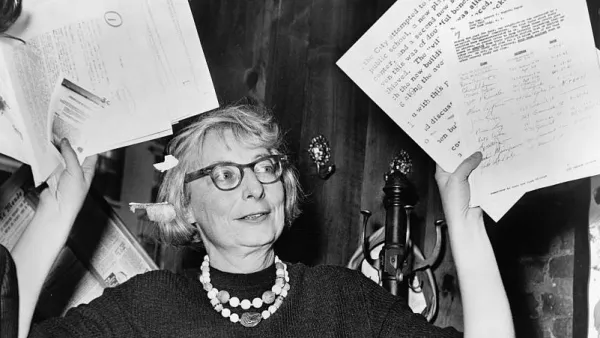Could the Los Angeles River use its own 'power broker'?
With the legacies of Robert Moses and Frederick Law Olmsted recently under discussion, Sam Hall Kaplan joins the conversation—offering a rich overview of Moses' work along with colorful anecdotes from their personal interactions. He then draws on the lessons of these two planning giants to explore major developments around Los Angeles River revitalization.
Kaplan explains, "With a bombastic glee, Moses arbitrarily imposed priorities, bent budgets, denigrated opponents, and expedited contracts. The banks and labor unions loved him. Politicians feared him. And communities hated him. He never learned to drive, preferring to be chauffeured. But if he had a favored vehicle, it was the bulldozer, as anyone standing in his way can attest. Public accountability and transparency were not common pursuits in the Depression and quarter century following, when Moses transformed New York City and state."
Despite this reputation, Kaplan wonders whether the Los Angeles River might need a personality equally able to get things done. He gives readers a sense of the "many public and private interests wading in the 51-mile course of the river," speaking with certain key figures to demonstrate the sheer number of projects and agendas at work. Given the Army Corps of Engineers' recent decision to recommend the $1.08-billion Alternative 20, promising habitat restoration and recreation for 11 miles of the waterway, Los Angeles faces the daunting task of organizing these multi-faceted efforts.
Kaplan concludes with a telling story: "I remember too well a community hearing nearly a decade ago for a particularly ambitious mixed-use school, parks and, housing project edging the river in Cypress Park... No one spoke out for housing, jobs, or a river promenade. This prompted an observer, when leaving, to confront the presumably pro-river councilman and loudly comment, 'Less consensus and more "cojones" would have been welcome.' It was a phrase that would have pleased Robert Moses and his champions."
A planner, writer, and academic, Kaplan has worked as both a design critic for the Los Angeles Times and an urban affairs reporter for the New York Times, along with teaching at Art Center College of Design, Yale, and Princeton. This exclusive article for The Planning Report reflects the writer's own opinions and research.
FULL STORY: Moses and the Future of the LA River

National Parks Layoffs Will Cause Communities to Lose Billions
Thousands of essential park workers were laid off this week, just before the busy spring break season.

Retro-silient?: America’s First “Eco-burb,” The Woodlands Turns 50
A master-planned community north of Houston offers lessons on green infrastructure and resilient design, but falls short of its founder’s lofty affordability and walkability goals.

Delivering for America Plan Will Downgrade Mail Service in at Least 49.5 Percent of Zip Codes
Republican and Democrat lawmakers criticize the plan for its disproportionate negative impact on rural communities.

Test News Post 1
This is a summary

Test News Headline 46
Test for the image on the front page.

Balancing Bombs and Butterflies: How the National Guard Protects a Rare Species
The National Guard at Fort Indiantown Gap uses GIS technology and land management strategies to balance military training with conservation efforts, ensuring the survival of the rare eastern regal fritillary butterfly.
Urban Design for Planners 1: Software Tools
This six-course series explores essential urban design concepts using open source software and equips planners with the tools they need to participate fully in the urban design process.
Planning for Universal Design
Learn the tools for implementing Universal Design in planning regulations.
EMC Planning Group, Inc.
Planetizen
Planetizen
Mpact (formerly Rail~Volution)
Great Falls Development Authority, Inc.
HUDs Office of Policy Development and Research
NYU Wagner Graduate School of Public Service



























